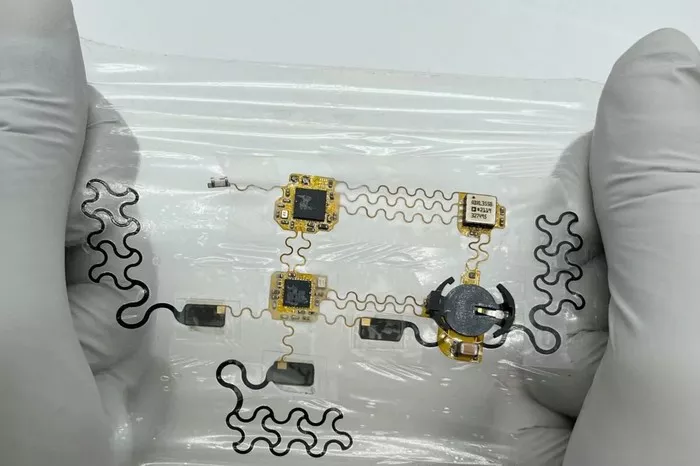Researchers have developed a wireless, non-permanent forehead e-tattoo that monitors brain activity to detect when mental strain becomes too high. Published on May 29 in the Cell Press journal Device, this innovative technology offers a lightweight alternative to traditional bulky EEG headgear, providing real-time insight into cognitive workload.
Human performance thrives within a cognitive “Goldilocks zone” — a balance between underload and overload. Maintaining this zone is essential for optimal focus and productivity. Currently, mental workload is assessed using tools like the NASA Task Load Index, which relies on subjective, time-consuming surveys completed after tasks.
The new e-tattoo objectively measures brain and eye electrical activity through electroencephalography (EEG) and electrooculography (EOG). Unlike conventional EEG caps that are heavy, wired, and require messy gel, this device uses paper-thin, stretchable sensors shaped in wavy loops and coils. These sensors comfortably adhere to the skin and provide clearer signals without discomfort.
Lu, a lead researcher, explained, “EEG caps with multiple sensors rarely achieve perfect signals because of individual differences in head shape. We tailor e-tattoos to each participant’s facial features, ensuring sensors are precisely positioned for optimal signal quality.”
In testing, six participants wore the e-tattoo while completing memory tasks of increasing difficulty. As mental workload increased, brainwave patterns shifted: theta and delta waves rose, signaling higher cognitive effort, while alpha and beta waves dropped, indicating fatigue. These changes confirm the device’s ability to detect cognitive strain.
Beyond detection, the device can predict mental fatigue. The team trained a computer model to analyze e-tattoo signals and successfully differentiate various mental workload levels. This predictive capability could provide early warnings to prevent lapses in focus.
Cost-wise, the e-tattoo is significantly more affordable than traditional EEG setups, which can exceed $15,000. The e-tattoo’s core components cost about $200, with disposable sensors priced around $20 each. Luis Sentis from UT Austin highlighted, “Low cost makes this technology accessible. We hope to one day offer e-tattoos that people can comfortably wear at home.”
Currently, the e-tattoo works only on hairless skin, but the researchers are developing ink-based sensors to extend coverage over hair. This would enable comprehensive brain monitoring across the entire head.
As automation and robotics become more common in workplaces and homes, this technology could revolutionize how we understand human-machine interactions. “While physical health and injuries have long been monitored, mental strain has been overlooked,” Sentis noted. “This breakthrough offers organizations a new tool to safeguard their workforce’s overall well-being.”
Related topics:

